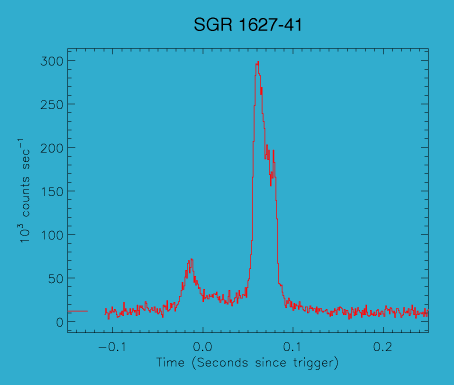Soft Gamma Repeaters

Soft Gamma Repeaters are one of the biggest success stories of BATSE on CGRO. These recurrent soft X-ray transients were discovered in the early '80s and identified as a separate population of young neutron stars that emitted frequent, but randomly spaced in time, outbursts of low-energy gamma rays, of very short duration, usually tenths of seconds. Until 1998 only three such sources were known; SGR 1627-41 is the first new SGR discovered with BATSE in June 1998. The figure displays a tremendous outburst from the source that reached a peak count rate of ~300000 counts s-1, and lasted less than 150 ms.
In 1998, SGRs were shown to possess extremely strong magnetic fields, of the order of 1014 Gauss, i.e., roughly 1000 times stronger than the average magnetic fields of radio pulsars and binary X-ray pulsars. They now form a well defined new class of objects, together with the Anomalous X-ray Pulsars (AXPs), called "magnetars".
If you have a question about CGRO, please contact us via the Feedback form.

